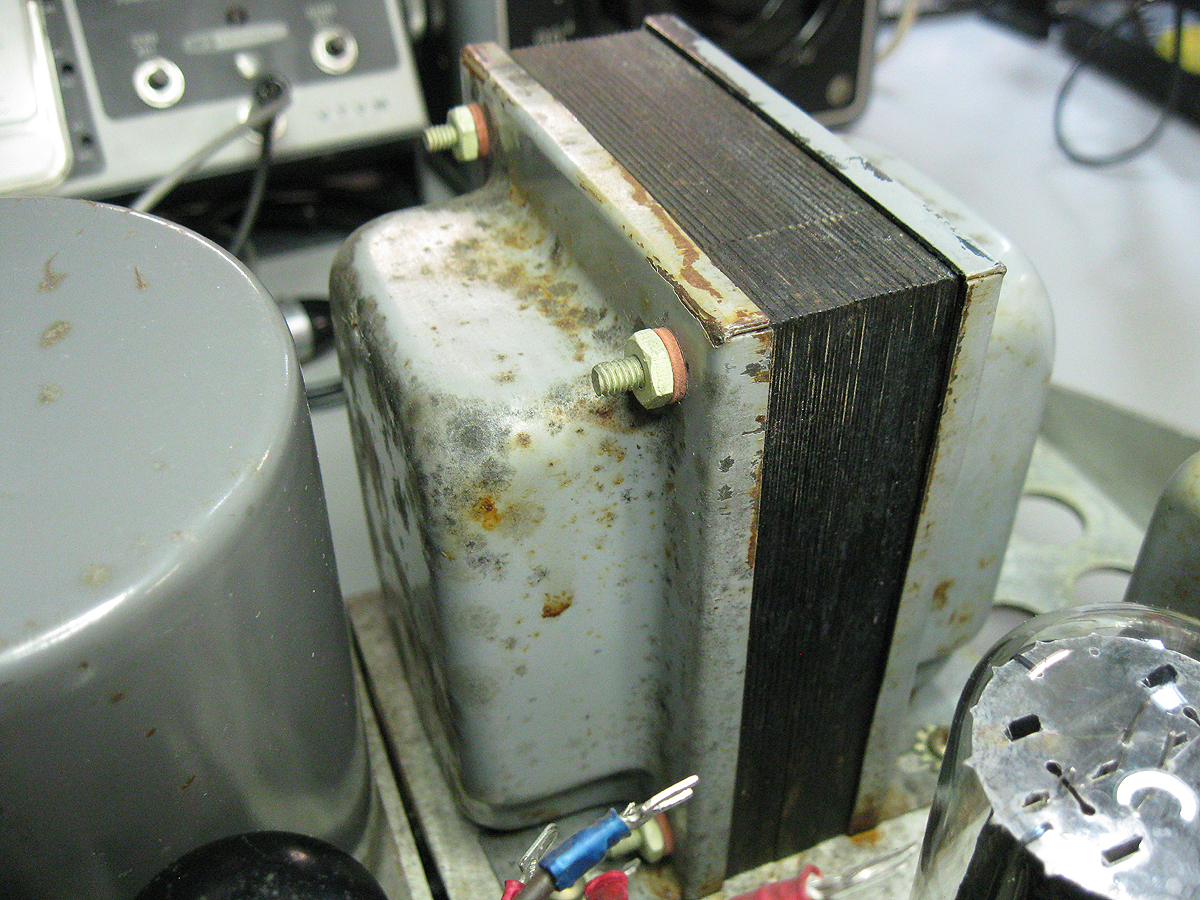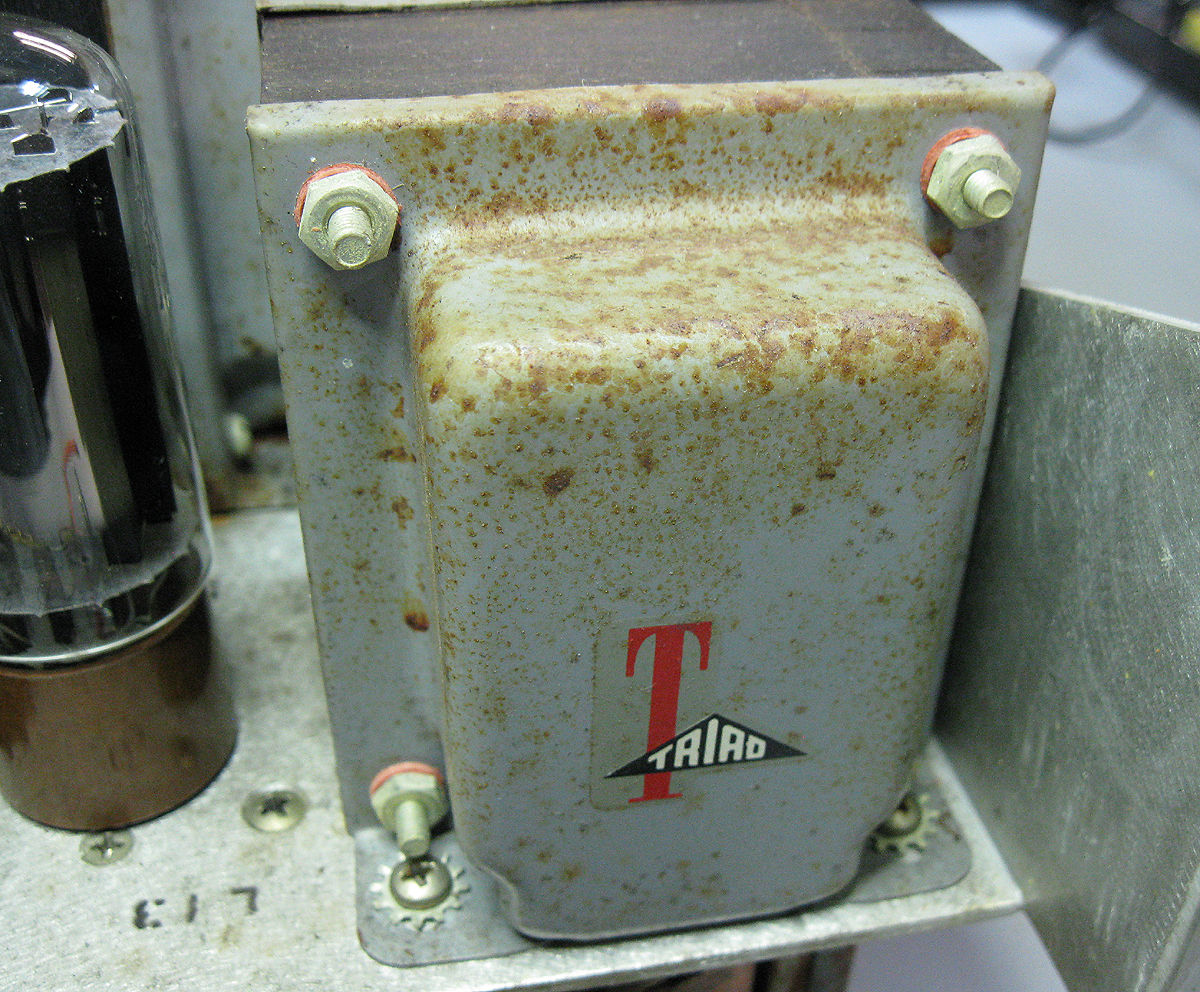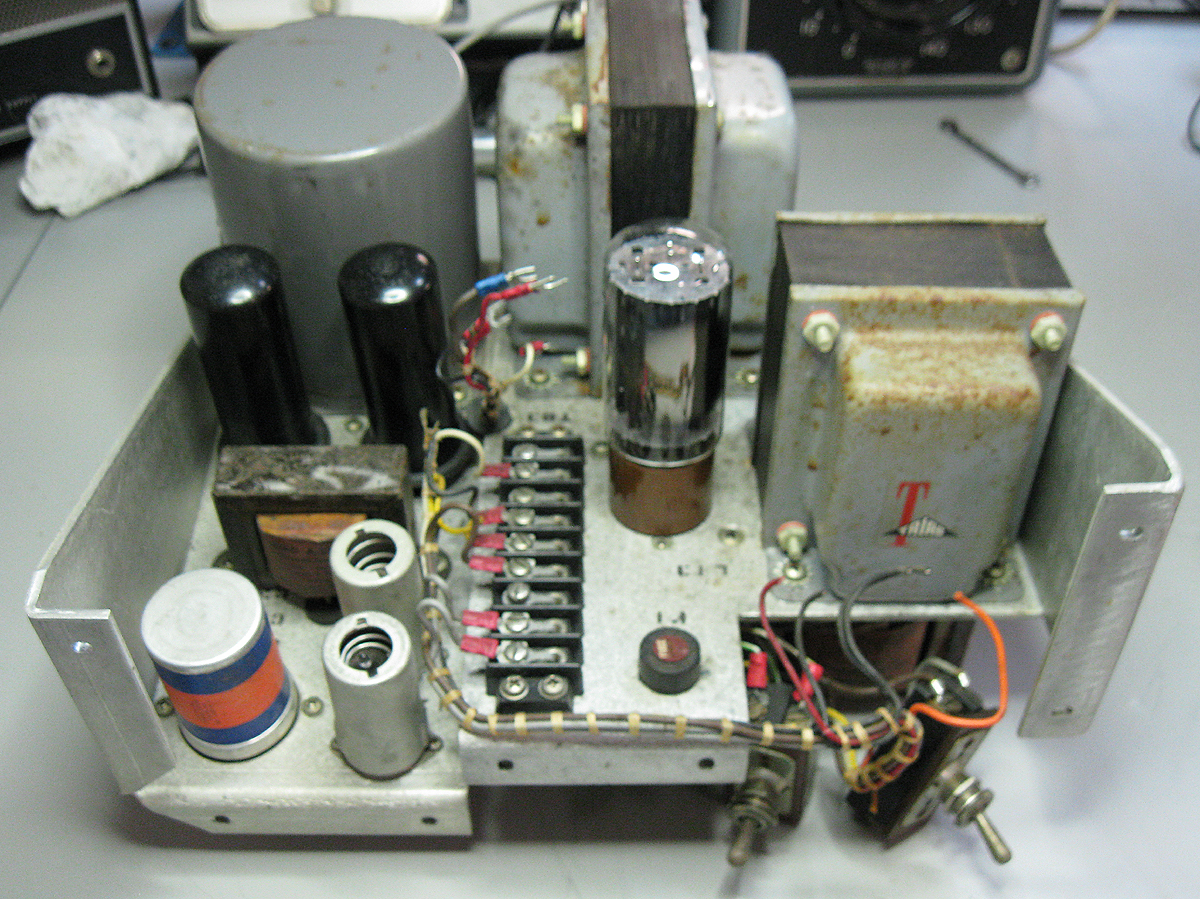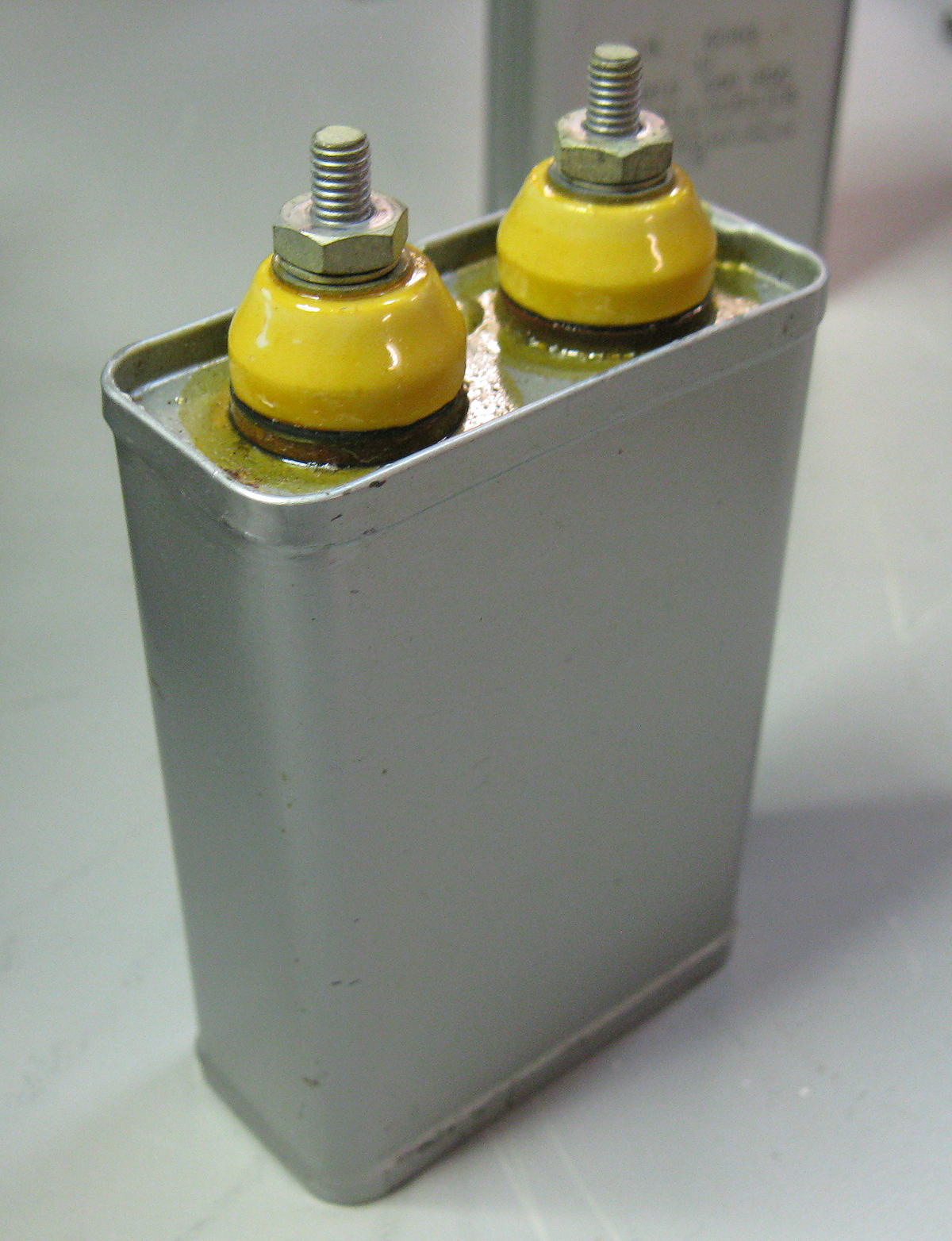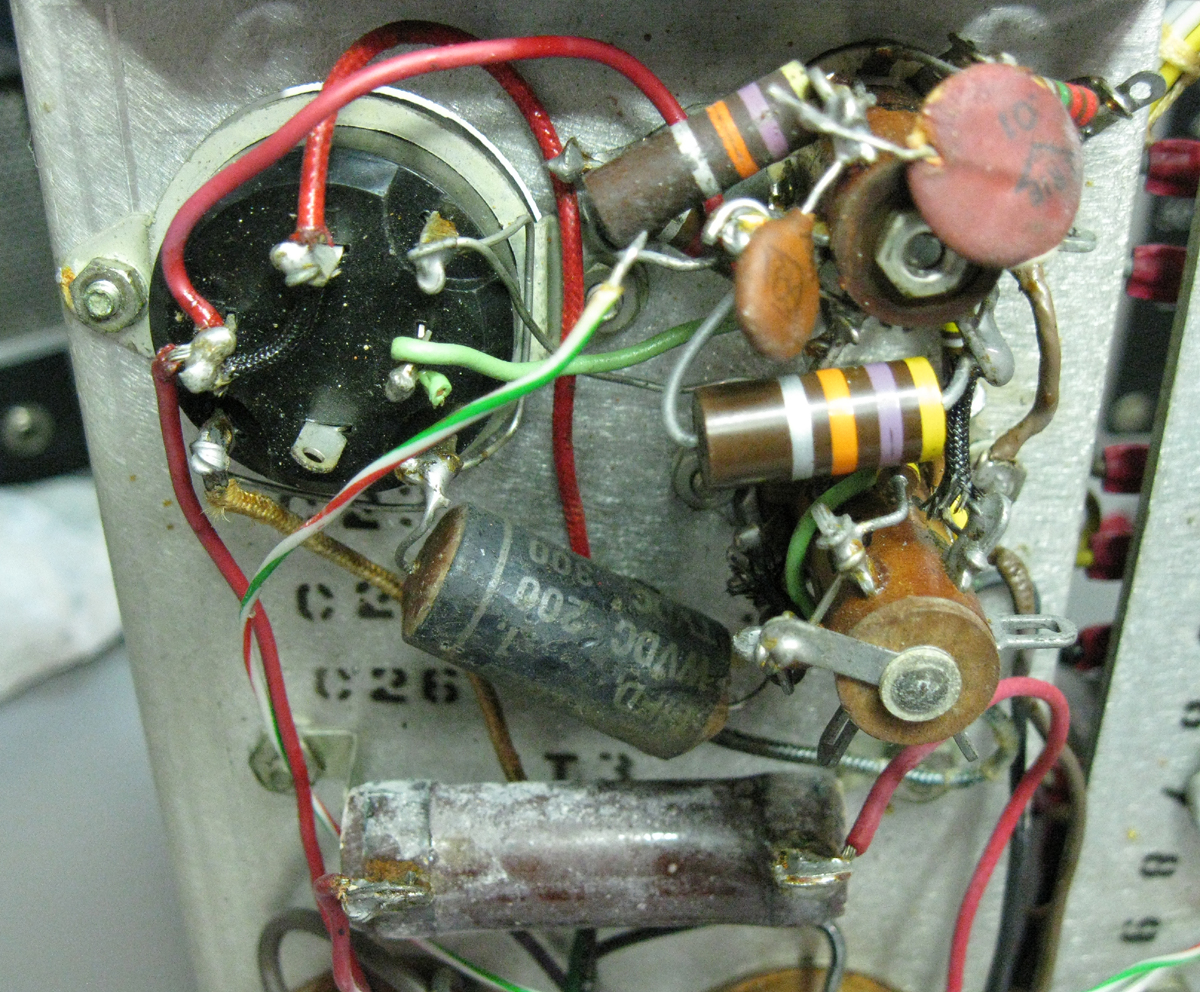Gates Radio M-5078 Commercial SW AM/CW Transmitter
Restoration Details - Part Four
The power supply/modulator deck needs a little more attention then the RF deck did. The deck was exposed to some moisture over time and shows the signs. Rust is prevalent on the steel components, particularly the cover for the Triad transformers. The UTC mod iron fared a little better in this respect. These all will require repainting to bring them back to the original look.
The deck is divided in two separate chassis. The modulator and the power supply their separate wiring harnesses are connected together via a terminal strip located on the edge of the power supply chassis. This makes it easy to work on each section separately. The wires are numbered for the terminal strip. As you can see in the image below, the chassis is in two separate sections, with the modulator to the left, and at the right the power supply.
- The Power Supply
The plate transformer is a Triad P5a which is 1100v CT @250ma with another secondary for the 5V for the 5R4 rectifier tube. The supply is of the choke input type, using a Triad C-18a choke, rated at 8H @300ma, 63Ω. The low resistance, high current capacity should provide very good regulation for this supply. Two Cornell-Dublier TJL type 4µƒ oil capacitors are in parallel along with a 100K bleeder resistor to form the rest of the filter. All voltages are derived from this B+ voltage source. The exception being the filament voltage which is supplied by a Triad F-18x filament transformer located on the underside of the chassis.
- The Modulator
The bobbins for these tubes are shown in image below, along with the socket for the multi-section capacitor used for the cathode circuits for all of the audio tubes.
One of the things you will almost always see inside vintage radios is the Mysterious Electronic White Stuff. The what? The MEWS. You know the white powder that seems to cover some power resistors, rubber parts, covers for wires, etc. What is MEWS? Well ... it's yeast. Yuk! It tends to grow on anything that has organic sugars on which it feeds. What? Yeast is eating my radio? Well ... yes sort of.
You can see the MEWS growing on the paper capacitor and the power resistor in previous image.
This yeast grows because it has two conditions it loves, warmth and a food source. Many early electronic components were covered with waxes, most times beeswax. This is the source of this particular Yeast (Zygosaccharomyces). Now how the heck do I know this? It's a funny story.
I have a friend who's girlfriend I like to call Egon (like the character from Ghostbusters.) I call her this because she is a research scientist who studies "fungus, molds & spores". One day I was at home and they stopped by. I was working on a radio and she looked over my shoulder and said, "Oh look ... spores". I said, "Excuse me? "Those are some kind of spores, maybe some form of Charomyces from the look of them." I pulled my hands out of the radio briskly and looked at her, probably with a disgusted look on my face. She said, "Don't worry if they had any toxicity you would be showing symptoms by now." "Oh ... thanks", I said.
"I can find out exactly what they are if you like.", speaking as if "they" were people. I replied, "Sure ... um ... How?" She puts up the obligatory one index finger in the universal sign of "one minute". She goes into her pocket book and pulls out this little thin plastic 4" tube, pops the top, and pulls out a little cotton swab. I'm a little dumfounded she has this thing with her, and my friend is standing there just rolling his eyes.
"May I?" she asks. I back away and say, "Hey knock yourself out!" She swabs the spores off one of the power resistors, slides it back into the tube and snaps the top closed. "I'll give you a call once I take a look." "Yes Doc. Thank you", I replied. After that I walked away from the bench and we went out for nice dinner. I thought no more of it after that. Once I got past the musing over Egon actually carrying the equipment around to "... collect fungus, molds and spores."
A few day later I get a call from Egon. She begins to tell me about beehives, wax, bees and yeast. Turns out this yeast, Zygosaccharomyces is found most often in non-pasteurized honey or non sterilized beeswax. She asked me if there was any wax in the radio. I told her that many older radios used beeswax as a way to prevent moisture from getting into the components. She said that's what it is. The beeswax used for industrial uses usually have some traces of sugars from honey left in it and since the wax is not meant for reuse in a hive it isn't sterilized. So some yeast spores remain. Over time, the spores multiply and prosper, living off your electronics for years.
She said using isopropyl alcohol will kill the spores and inhibit its return. So there you go. Now that you know what it is, you can kill it. And not have the MEWS return anytime soon. I usually take a soft paint brush and swab around copious amounts of alcohol. It does a nice job of removing, the MEWS, and flux splatter.
I know ... I know. TMI !!!
More Coming Soon!!!
73'
John LeVasseur, W2WDX
All text and images contained herein are under strict copyright.
Reprinting or publication in any medium is not allowed without express written consent of the author.
Copyright 2012 John LeVasseur
